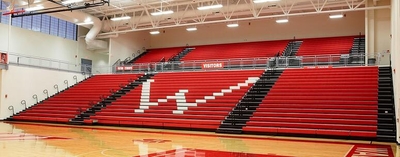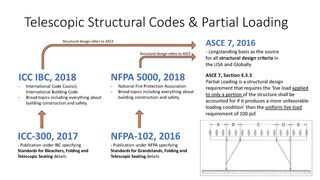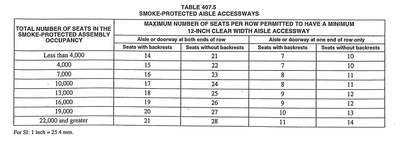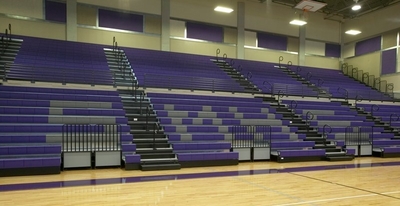Gymnasium Building Codes 101- Rules Of Accessibility
By Anne Chapman
May 13, 2020

Codes govern construction practices to ensure that all aspects of building construction are safe and durable.
ASCE 7 (2016) has long been the basis for all structural design criteria in the US and around the world. Section 4.3.4 addresses partial loading as a structural design requirement.
International Building Code (IBC) from 2018, published by the International Code Council (ICC), addresses building construction and safety, referring to the structural design in ASCE 7 (2016). The National Fire Protection Association's NFPA-102 (2016) must also be considered. Both ICC-300 (2017) and NFPA-102 (2016) specify the standards for bleachers, folding and telescopic seating details.

Local codes can vary, as each city has its own specific building codes. Before you start building you must meet all the building codes for your state, county, city or municipality. Failure to do so can result in a suspension of your building permit until you comply with all local codes. Check with your location’s municipal office to ensure your building plans are up to-date.
Bleachers, grandstands and folding and telescopic seating that are not building elements must comply with ICC 300. ICC 300 includes egress (exit) requirements for your gymnasium seating which are based on occupant load and other variables, including:
- Location/number of aisles
- Aisle width
- Row Spacing
- Riser Height
The starting point of a seating layout generally begins with determining the number of seats between aisles. Modern codes offer formulas rather than rigid rules to determine the number of seats between aisles and aisle width requirements. The chart below identifies the maximum number of seats allowed. This varies based on seats with and without backs (bleacher seats vs. chairs) and overall capacity.

NOTE: While this chart states for Smoke Protected facilities – it applies to Non-Smoke Protected facilities as well.
Aisle Widths - Formula for Comfort
As the clear aisle accessway increases above 12”, additional seats can be added following these guidelines:
- Single Access – One additional seat may be added for each .6” of additional clear passage.
- Dual Access – One addition seat may be added for each .3” of additional clear passage.
Once the number of seats between aisle is determined, the actual aisle width can be calculated.

It is important to strike a balance with the number of seats between aisles, and aisle width. More seats between aisles usually equates to wider aisles. Additionally, increasing the number of seats between aisles generally requires a deeper row spacing. It may make more sense to add an aisle to reduce excessively wide aisles.
Aisle widths are determined based on established minimum clear widths and/or per-person formulas. When an aisle serves more than 50 seats, the following minimum aisle widths apply:
- 48” for aisles serving seating on each side.
- 36” for aisle serving seating on only one side.
Differing aisle widths apply to a Smoke Protected vs. a Non-Smoke Protected facility.
Smoke Protected Assembly Seating requirements:
- .2” for each person served with handrails within 30”.
- .250 for each person served without handrails within 30”.
Non-Smoke Protected Assembly Seating requirements:
- .3” for each person served with handrails within 30”.
- .375 for each person served without handrails within 30”.
We hope you find this information helpful - check back frequently, as we continue to add new content!